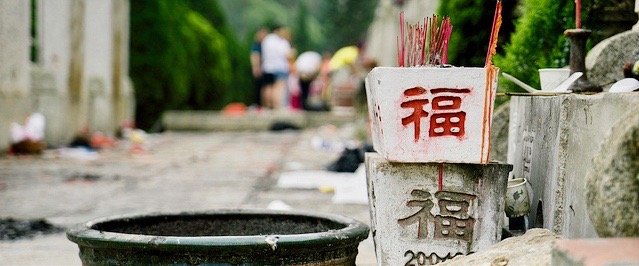The First Chinese Immigrants to Hamilton County
By: David Heighway, Hamilton County Historian
While Hamilton County has people of many different nationalities living here today, at one time it was rare enough to be reported in the news. The Ledger reported on December 14, 1883 that, “A Chinaman, the first on record, was in town Monday.” The man may have been looking at commercial properties, because the first Chinese laundry in the county was opened in August of 1884. It was operated by a man named Sam Hing. By December, Hing had closed the business because of personal health issues. The paper said that he had been a good workman.
On July 8, 1887, a new Chinese laundry opened by a man named Tie Loy. Loy would live in Noblesville for several years and became a well-known member of the community. His background history is uncertain. The 1900 census said he was born in 1848 and had emigrated in 1883. His arrival may have been earlier since it was later noted that he was a naturalized citizen and could vote. The Chinese Exclusion Act had been passed in 1882 which prevented Chinese from emigrating or becoming citizens.

Loy sold the laundry to a man named Yee Wah in April 1888 and moved to Bloomington for a short time. Wah ran the business from April to July. Then from October 1888 to March 1889, the Noblesville Laundry, (which may or may not have been the same business), was run by men named Lee Wah and Pong Hi. Loy had returned to Noblesville by January of 1890, when he gave some Chinese plums to Ledger reporter who had never seen them.
In 1891, a steam laundry was built to compete with Loy’s business. It failed and was purchased by Loy in 1892. Loy was very involved with the community, for example, donating $20 to the construction of the Presbyterian Church in 1893. In 1894, he married 24 year old Lydia J. Kilde, whose parents were immigrants from Ireland. He was listed as Chan Tie Loy in the marriage record, which is the only place this occurs. His first child, a boy named Frank, was born in November of 1895.
Loy was interested in politics, and when a big Republican rally was held in 1896, he furnished material to make souvenirs. He would continue to vote in elections up to 1902. He took his young son to see the visit of President William McKinley in October 1898. At one point, he held the boy high enough to see inside the President’s railroad car, where Mrs. McKinley saw him and smiled at him.
Sadly, the child died in November 1898 of Bright ’s disease and was buried in Crownland Cemetery. The newspaper said the boy was a favorite of people along Eighth Street and, “The humble couple have the sympathy of the entire community.” Loy’s wife had been pregnant when the boy died and January of 1899, the paper said “Tie Loy, the Chinese laundryman, and his American wife are the proud possessors of a new born girl baby.” The daughter was named Ethel M. Loy.
In April of 1899, Loy went to Cicero to buy equipment from another Chinese laundry after the death of its owner, Sam Kee, who the paper called “an old acquaintance” of Loy’s. Kee’s son Pang came from California to settle things. Tie Loy opened a laundry in Arcadia in July of 1900 and moved his family there.

There was an interesting story that appeared in the Ledger in July of that year. They had noticed that on Memorial Day, Loy had gone to the burial site of his son in Crownland Cemetery and placed bananas, candy, eggs and other things on the grave. This was probably a traditional Chinese custom. Unfortunately, the story was part of an article called “Chinese Character” which made sneering comment about “superstitions” and “these slow plodding people”.
In August, it was reported in the Arcadia newspaper that the family was suffering from extreme poverty. It also mentioned that his wife Lydia had epilepsy. While people from town gave provisions and money, prejudice was becoming more obvious. The article concluded with the line “It would not look well for even a ‘heathen Chinee’ to starve to death in Arcadia.”
The family moved to the county poor farm in September of 1901. The newspaper reported that a child of his, probably the daughter, died in January of 1902 and this child was also buried in Crownland Cemetery. Apparently neither grave is marked with a headstone.
There were stories of possible abuse at the county home, including Lydia being beaten. Loy got out and attempted to revive his business in 1903. However, he was losing his eyesight and was unable to work. His wife divorced him that year and would remarry in 1905.
Loy moved to Indianapolis in 1904. The last reports of him are garbled. For some reason, the newspapers confused him with a man named Chan Yin Sun. Both men were determined to return to China to die and be buried in their homeland. Tie Loy left the United States by March of 1904.
